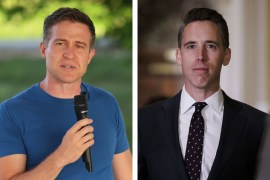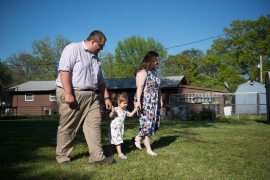At 11 a.m. last Friday, thousands of former Paradise, Calif., residents were taking stock of all they had lost to the worst wildfire in the state’s history while they continued the grim task of looking for missing loved ones.
At the same moment, with smoke from the deadly Camp Fire blanketing much of the state, millions more Californians were struggling to breathe.
Nov. 16 was one of the most dangerously smoky days in Northern and Central California, as wildfire smoke shrouded communities like an acrid fog.
Air quality readings in several cities, including Sacramento, Modesto and Chico, spiked into “hazardous” territory. But the risks extended much farther away. Residents of San Francisco Bay Area communities couldn’t see the city’s iconic skyline because of the intense smoke.
“We saw the highest readings in some of the locations that we’d ever seen before,” said Simrun Dhoot, a spokeswoman for the Bay Area Air Quality Management District, the local government agency that monitors air quality. “It was pretty much the worst air quality that we’ve ever experienced.”
The Camp Fire, which broke out on Nov. 8, has killed at least 79 people, burned more than 150,000 acres and destroyed more than 12,000 homes. The combined smoke from that and other California fires has drifted as far as the East Coast.
Camp Fire Incident Update 11.20.18 AM#CampFire #ButteCounty @ButteSheriff @CountyofButte @townofparadise @chicofd @chicopolice @CHP_Valley @CHP_Oroville @CHP_Chico #ButteCounty @CAL_FIRE pic.twitter.com/QrvGyxc3RG
— CAL FIRE/Butte County Fire Department (@CALFIRE_ButteCo) November 20, 2018
Wildfire smoke is dangerous because it contains fine particles that enter the lungs and can infiltrate the bloodstream. Prolonged exposure can cause or worsen respiratory issues, such as asthma. Some groups are especially vulnerable, including those with cardiovascular issues, children and older people.
The U.S. Environmental Protection Agency’s AirNow website displays air quality with its “air quality index,” or AQI. On a scale from 0 to 500, the index is divided into six categories: good, moderate, unhealthy for sensitive groups, unhealthy, very unhealthy and hazardous. The readings are based on measurements of five kinds of pollution tracked by the EPA, including ozone and particulate matter.
In this case, the AQI readings reflect the density of fine particulate matter in the air full of wildfire smoke.
On this scale, readings above 100 mean the air is unhealthy for sensitive groups, including people with heart or lung disease, older people and children. Readings above 150 are considered unhealthy for everyone.
Sacramento’s air registered in the 300s for much of the day Friday, a level considered “hazardous” and constituting “emergency conditions,” according to the EPA. Residents were warned to stay inside. Sacramento’s AQI — and others in the region — topped 400 at times.
Some of those levels were worse than readings captured at the same time from cities known for their terrible air quality, like China’s Shanghai and Delhi, India.
By contrast, air quality in other parts of California, especially Southern California and coastal communities, were in the healthy range. For instance, San Bernardino, hundreds of miles away, was categorized as “good,” with an AQI of 26.
The massive Carr Fire that blazed in and around Redding in July and August was the last major fire to significantly affect air quality in the Sacramento region. The worst recorded reading during that fire was around 130, the Sacramento Metropolitan Air Quality Management District said.
At AQI levels above 150, public health officials suggest people avoid prolonged activity outdoors, or wear the right kind of mask if they must go outside — especially if they have a health condition.
State health officials recommend “N95” respirators or “P100” masks, which are intended to block at least 95 percent of the tiny particulate matter measured by the AQI — known as PM2.5 — that spews from wildfire smoke.
Meteorologists were predicting stronger southerly winds and rain for Wednesday, which is expected to help clean the air and fight the Camp Fire, which is 70 percent contained.
But experts warn that Californians might have to learn to live with smoke-filled air.
“We’re expecting to see these events happen more often because of climate change,” Dhoot said. “People are starting to realize they need to stock up on N95 masks.”
This story was produced by KFF Health News, which publishes California Healthline, an editorially independent service of the California Health Care Foundation.






